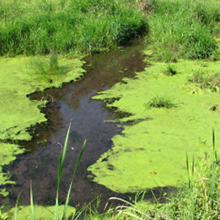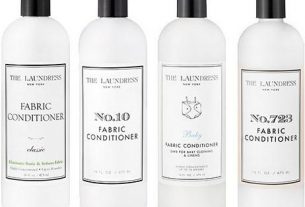**** NS Environment Release
A suspected blue-green algae bloom is in Lake Banook, Dartmouth
Blue-green algae can cause health effects to people and pets. We recommend that people wishing to use the water are watchful to ensure there are no algal blooms or mats anywhere nearby. People should be cautious about potential exposures through water activities that can involve ingestion, and/or direct contact with water or water sprays.
Blue-Green Algae
Blue-green algae, more recently called cyanobacteria, are a type of microscopic, algae-like bacteria that live in surface water like lakes, ponds, rivers and streams.
There are two forms of blue-green algae: blooms that form in and on the water, and mats that grow on the bottom of rivers and lakes. Blue-green algae may produce toxins that can make you sick. If you think you see blue-green algae, you should not drink or swim in the water, or let children or pets swim in it or drink it. Please report it to your local Environment and Climate Change office or by calling 1-877-936-8476, and our staff will investigate.
Once we confirm blue-green algae, an advisory will remain in place for that water body. This is because once blue-green algae appears, it is more likely to reappear in the same lake and testing is not sufficient to ensure safety because of its unpredictable nature. We want you to have the information you need to make informed decisions to protect yourself, your family and pets.
When blooms or mats are present or following a recent bloom, we recommend people don’t enter the water or let pets swim in or drink it.
Confirmed blue-green algae in 2021
Here are the lakes where there has been confirmed blue-green algae in 2021:
| Month | Year | Lake name | County |
| August | 2021 | Shubenacadie Canal (inclusive from Grand Lake to Lake Micmac) |
Halifax |
| August | 2021 | Fletcher Lake | Halifax |
| August | 2021 | Lake Thomas | Halifax |
| August | 2021 | Lake Charles | Halifax |
| August | 2021 | Lake MicMac | Halifax |
| August | 2021 | Fox Point Lake | Lunenburg |
| August | 2021 | Shubenacadie Canal (between Fletchers Lake and Lake Thomas) |
Halifax |
| August | 2021 | Loon Lake | Halifax |
| August | 2021 | Bell Lake | Halifax |
| August | 2021 | Zwickers Lake | Annapolis |
| August | 2021 | Porters Lake | Digby |
| August | 2021 | Cunard Pond | Halifax |
| August | 2021 | Lumsden Pond | Kings |
| August | 2021 | Springfield Lake | Annapolis |
| August | 2021 | Lake Ainslie | Inverness |
| July | 2021 | Lake Torment | Kings |
| July | 2021 | Gully Lake | Colchester |
| July | 2021 | Sherbrooke Lake | Lunenburg |
| July | 2021 | Williams Lake | Halifax |
| June | 2021 | Shubenacadie Grand Lake | Halifax |
| June | 2021 | Ogden Lake | Yarmouth |
| June | 2021 | Heron Lake | Digby |
Confirmed blue-green algae in previous years
| Month | Year | Lake name | County |
| August | 2020 | Laytons Lake | Cumberland |
| August | 2020 | Tucker Lake | Halifax |
| July | 2020 | Lake Micmac | Halifax |
| July | 2020 | Wentworth Lake | Queens |
| July | 2020 | Lake Banook | Halifax |
| July | 2020 | Lake Fanning | Kings |
| July | 2020 | Lake Ogden | Yarmouth |
| July | 2020 | Lake Vaughan | Yarmouth |
| July | 2020 | Raynards Lake | Yarmouth |
| July | 2020 | Sullivan Lake | Guysborough |
| July | 2020 | Martins River | Lunenburg |
| July | 2020 | Shorts Lake | Colchester |
| July | 2020 | Lake Ainslie | Inverness |
| July | 2020 | Sherbrooke Lake | Lunenburg |
| July | 2020 | Sherbrooke Lake | Guysborough |
| July | 2020 | Duck Lake | |
| June | 2020 | Big Mushamush Lake | Lunenburg |
| August | 2019 | Nowlans Lake | Digby |
| August | 2019 | Lake Fanning | Digby |
| August | 2019 | Lake Ogden | Yarmouth |
| August | 2019 | Lake Vaughan | Yarmouth |
| August | 2019 | Raynards Lake | Yarmouth |
| August | 2019 | Sandy Lake | Guysborough |
| August | 2019 | Mersey River | Queens |
| August | 2019 | Oak Island Causeway | Cumberland |
| September | 2019 | Lake Micmac | Halifax |
| September | 2019 | Rafuses Cove | Lunenburg |
| July | 2019 | Sherbrooke Lake | Guysborough |
| July | 2019 | Vaghan River | Hants |
| July | 2019 | Lake Ainslie | Inverness |
| July | 2019 | SW Margaree | Inverness |
| July | 2019 | Miners Marsh | Pictou |
| 2019 | Lake Annis | Yarmouth | |
| 2019 | Powder Mill Lake | Halifax | |
| August | 2018 | Lake Mic Mac | Halifax |
| August | 2018 | Gibson’s Lake | Annapolis |
| August | 2018 | Joshua Lake | Halifax |
| August | 2018 | Ponhook Lake | Lunenburg |
| August | 2018 | Hill Provincial Park | Pictou |
| August | 2017 | Armstrong Lake | Kings |
| August | 2017 | Black River | Kings |
| July | 2018 | Big Mush-a-mush | Lunenburg |
| July | 2018 | Ponhook Lake | Lunenburg |
| January | 2018 | Hubley Mill Lake | Halifax |
| September | 2016 | Ponhook Lake | Lunenburg |
| September | 2016 | Lumsden Pond | Kings |
| August | 2016 | Middle River of Pictou | Pictou |
| August | 2016 | Mattatal Lake | Cumberland |
| July | 2016 | Powder Mill Lake | Halifax |
| September | 2015 | Fish Lake | Halifax |
| November | 2014 | Lochaber Lake | Antigonish |
| July | 2014 | Branch Lake | Lunenburg |
| July | 2014 | Fox Point Lake | Halifax |
| June | 2014 | Lake Torment | Annapolis |
| October | 2013 | Lake Banook | Halifax |
| August | 2013 | Lumsden Pond | Kings |
| July | 2013 | Raynards Lake | Yarmouth |
| August | 2012 | Grand Lake | Halifax |
| August | 2012 | Lochaber Lake | Antigonish |
| September | 2012 | Germain Lake | Digby |
| July | 2012 | Powder Mill Lake | Halifax |
| June | 2011 | Lake Fanning | Yarmouth |
| July | 2011 | Lake Vaughan | Yarmouth |
| September | 2009 | Lake Ainslie | Inverness |
What does a bloom look like

Despite the name, blue-green algae blooms can also be turquoise, olive-green or red. Blooms can look like fine grass clippings in the water, spilled paint, pea soup or sometimes like a thick scum on the surface.
There may also be algal mats at the bottom of clear shallow areas of lakes and rivers, or on the shoreline. The algae mats look like clumps of vegetation, and can appear black, brown or dark green in the water. On the shoreline, they may appear brown or grey once they have dried. Animals are attracted to their odor and may want to eat them. Children and pets should be kept away from algae mats that are found floating near the shore or that may have washed up along the shoreline.
Whenever you see a bloom or mat, you should treat it as potentially toxic until you know for certain that it is not blue-green algae.
The Province of New Brunswick has developed an excellent video guide of what to look for.
How do blooms happen
Blue-green algae blooms occur all around the world and across Nova Scotia. They normally happen when the weather is warmest in late summer and early fall (May to October). Blooms are increasing in frequency due to climate change, which causes water temperatures to be warmer.
Blue-green algae are not usually visible on the surface. When conditions are favourable, the bacteria can quickly reproduce to form a large mass called a bloom or scum. The bacteria thrive in areas where the water is shallow, warm, slow-moving, high in nutrients such as phosphorous and nitrogen, and there is sufficient light penetration.
Phosphorus and nitrogen are naturally occurring elements that are essential to plant and animal life. Excess nutrients can make their way into our lakes and rivers and promote the growth of blue-green algae. When it rains, storm water or surface water runoff carries the material it encounters — including silt, fertilizers, animal feces and decaying vegetation — on its way to the nearest streams, rivers and lakes. These materials are nutrient sources for the growth of aquatic plants, algae and blue-green algae. Wastewater and sewage can also contain nutrients. Controlling or eliminating these sources can help reduce the occurrence and severity of blooms.
How will it impact me?
Health effects can occur through dermal contact, inhalation or ingestion of water contaminated by microcystins. Symptoms of exposure include:
- itchy, irritated eyes and skin if you swim in contaminated water
- headaches, fever, diarrhea, abdominal pain, nausea and vomiting if you swallowed or inhaled contaminated water
Prolonged or high exposure, such as swallowing a large quantity of toxins, may damage the liver. Children are at greater risk due to their lower body weight. Also, they generally spend more time in the water and are more likely than adults to accidentally swallow contaminated water.
In the event of an algae bloom:
- do not drink, swim, bathe, shower or brush your teeth with the water
- do not allow children, pets or livestock to drink or swim in the water
- use alternative water sources such as bottled, carted or tanked water, or call a water treatment specialist for help
- do not rely on jug or pitcher-type filtration systems
- do not boil the water as it could release more toxins
- do not cook with the water
- do not water your vegetable garden with the water
- you can wash dishes or other objects, as long as you rinse them with uncontaminated water and dry them thoroughly
- don’t use water containing blue-green algae for washing clothes
- be careful with recreational water activities that generate sprays, such as motor-boating, because the toxins can be inhaled
- when watering non-vegetable plants, avoid spray drift that may affect people and animals through inhalation or contact
- do not use herbicides, copper sulphate, or other algicides and do not treat the water with a disinfectant like chlorine (bleach)
- be cautious about eating fish caught in water where blue-green algae blooms occur (do not eat the liver, kidneys and other organs because the toxins can be stored here)
- if you have contact with a bloom, you should shower or wash yourself and any items that may have come in contact
- if you get sick, seek medical attention
Drinking water
Surface water such as lakes or rivers is not recommended as a drinking water source for people’s homes because it can become more easily contaminated than groundwater and because the water quality and chemistry is much more variable.
If you take your drinking water from a lake, river or another source of surface water, or if you have a shallow-dug well next to a lake or a river, your drinking water can be contaminatedduring and following the presence of a bloom as the highest concentrations of toxins are generally released into the water when the bloom dies.
If you wish to continue to use surface water as your source for drinking water, the best time to take a water sample is once the bloom has died off and there are no longer visible signs of it. Make sure you ask the lab to test for the toxin microcystin. Check the results to make sure microcystin is not over the limit of 0.0015 milligrams/litre. If it is, you should find a different source of drinking water.
Water treatment systems
Most municipal water supplies use specialized treatment to manage blue-green algae. Most residential filters do not remove the toxins caused by blue-green algae. If you have questions about your residential filter, please contact a water quality specialist, with a degree in chemistry, engineering, environmental sciences or biology, or a technical diploma in water quality or water treatment from a recognized institution.
Regardless of who you choose, it’s important to:
- understand what contaminants you need to treat for
- ask to see technical specifications for treatment units. Look for NSF International certification status, and how well the unit is expected treat the type of contaminants in your water supply.
- ask questions about how the treatment unit will treat the type of contaminants in your water supply
- ask about the monitoring, maintenance and warranties of the treatment units
- review and compare treatment units
- seek and compare multiple quotes from




